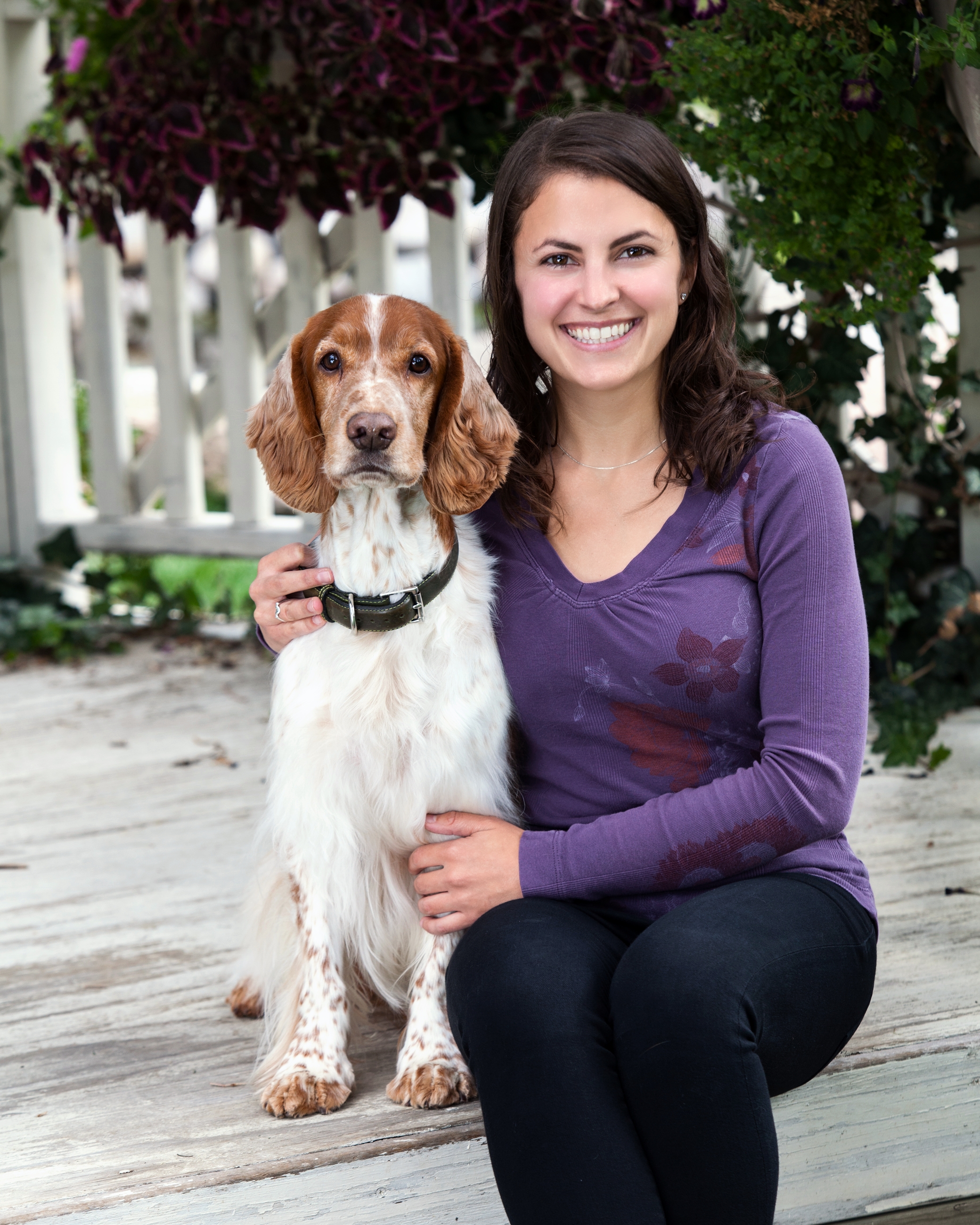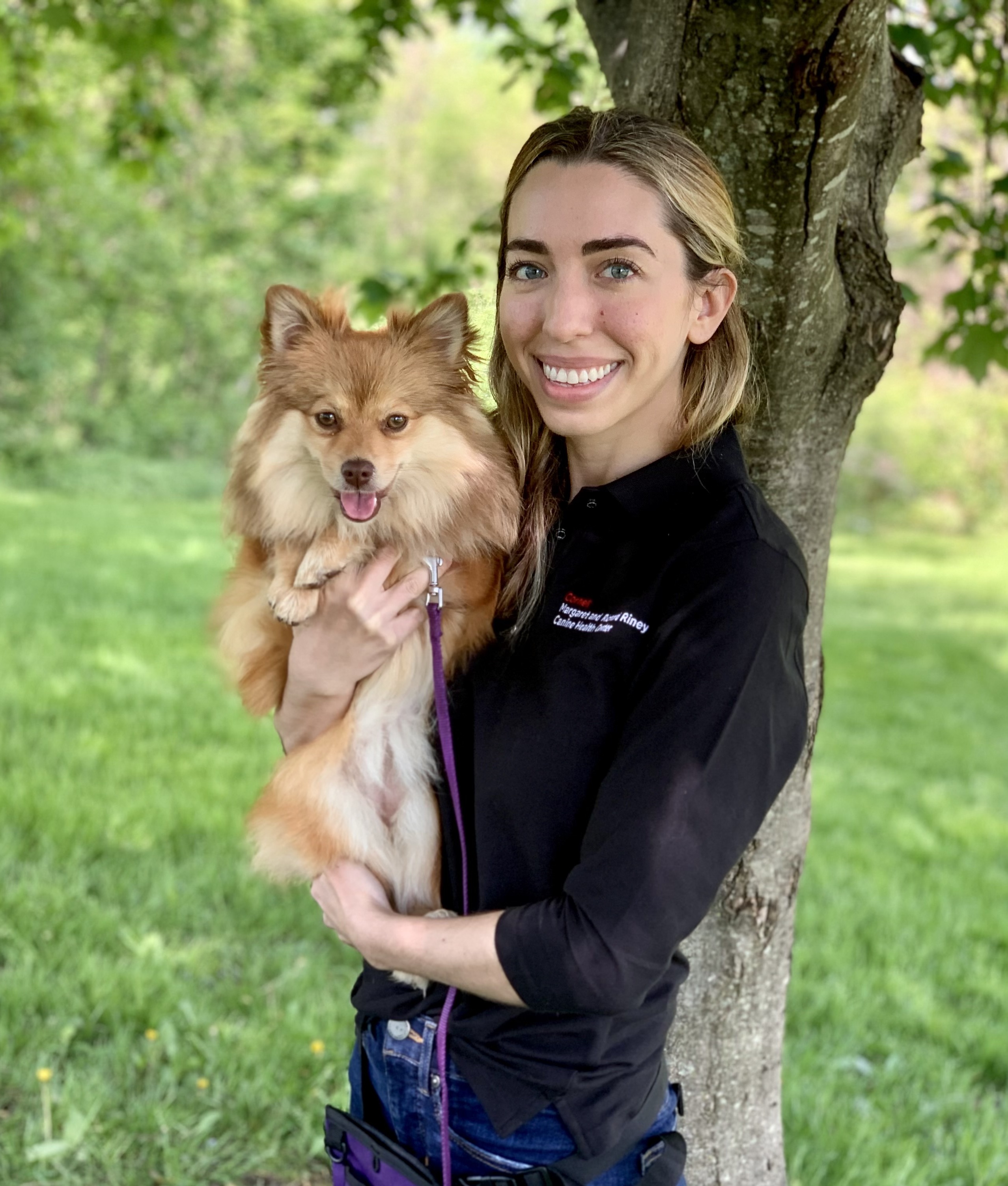Dog estrous cycles
Overview
When female dogs enter puberty, they begin to have estrous cycles. The estrous cycle consists of four distinct stages. What most people refer to as “coming into heat” or “coming into season” refers to the stages called proestrus and estrus. While there can be extreme variation between individuals in both behavior and physical exam findings in each stage, understanding the components of a dog’s estrous cycle is useful for individuals planning to breed. It can also be helpful for those looking to plan when to have their dog spayed to prevent pregnancy or future heat cycles.
When do heat cycles start and how often do they occur?
A dog’s first heat can start between the age of 6-24 months, with smaller breeds averaging earlier than larger breeds. Most dogs will have two heats per year or an average of every 5-11 months. Some breed exceptions occur, such as the Basenji and Tibetan Mastiff, which typically only cycle once yearly. The most notable sign of a dog’s heat cycle is bloody vaginal discharge, usually lasting between 14 and 21 days.
The four estrous cycle stages include proestrus, estrus, diestrus, and anestrus.
1. Proestrus
Estrogen is a hormone produced by the ovaries during proestrus and peaks one to two days before the next stage (estrus). The estrogen produced in this stage causes bloody vaginal discharge and swelling of the vulva (or external genitalia). Dogs will be attractive to and may demonstrate playful behavior with male dogs during this stage but are not yet receptive to breeding. This stage can last, on average, between six to eleven days.
2. Estrus
Estrus begins when the female is receptive to breeding. Estrus generally starts with a surge in luteinizing hormone (LH) due to decreasing estrogen and increasing progesterone. These hormonal changes are what influence the female's receptivity to breeding. The vaginal discharge may change to straw-colored, although many variations exist between individuals. Estrus usually lasts five to nine days but may vary between one and twenty days.
3. Diestrus
Diestrus begins when the female no longer shows signs of estrus, such as standing to be mounted. It is characterized by an elevation in progesterone, which peaks 2-3 weeks after ovulation and then plateaus at that elevated level for 1-2 weeks before slowly decreasing over 10-30 days. Progesterone (the pregnancy maintenance hormone) will increase during this stage, whether a dog is pregnant or not. Diestrus ends when progesterone concentrations return to baseline. During this stage, female dogs will no longer be attractive to males, nor will they allow mating. The external genitalia is indistinguishable between diestrus and the next stage, anestrus.
4. Anestrus
Anestrus is the stage a dog enters either at the end of her heat cycle or after having a litter. Progesterone levels remain low throughout this stage. There is a period post-partum or after a normal heat cycle where the uterus must undergo a process called involution. This process repairs the uterus to prepare for repeating the estrous cycle and requires about four months to complete.

How can I optimize the timing of breeding my dog?
If you are interested in or currently breeding your dog, speak to your veterinarian about what medical care to expect and when. Your veterinarian can perform testing to determine what stage of their estrous cycle your dog is in, such as vaginal cytology (which uses a vaginal swab to examine cells under the microscope) or hormone levels.
How do I prevent my dog from going into heat or becoming pregnant?
If you do not want your dog to experience heat cycles or become pregnant, the best prevention is having your dog spayed, which is a surgical procedure to remove the ovaries and, in many cases, the uterus. Removing the ovaries prevents estrogen and progesterone production, which prevents a heat cycle. A spay also prevents a common reproductive infection of the uterus known as pyometra and, in many cases, reduces the risk of mammary cancers.
My dog just went into heat. Should I reschedule her spay?
If your dog is currently in heat, it is best to wait about two months after her cycle to pursue a spay procedure. A spay can be performed when a dog is in heat if needed, but waiting about two months allows the hormones to return to baseline, making for an easier surgery with less risk of bleeding.

This health topic was developed as part of a collaboration between the Cornell Richard P. Riney Canine Health Center and Embark Veterinary, Inc. Learn more about hereditary risks of canine health conditions by exploring our genetic disease resource page.
Published July 2023


